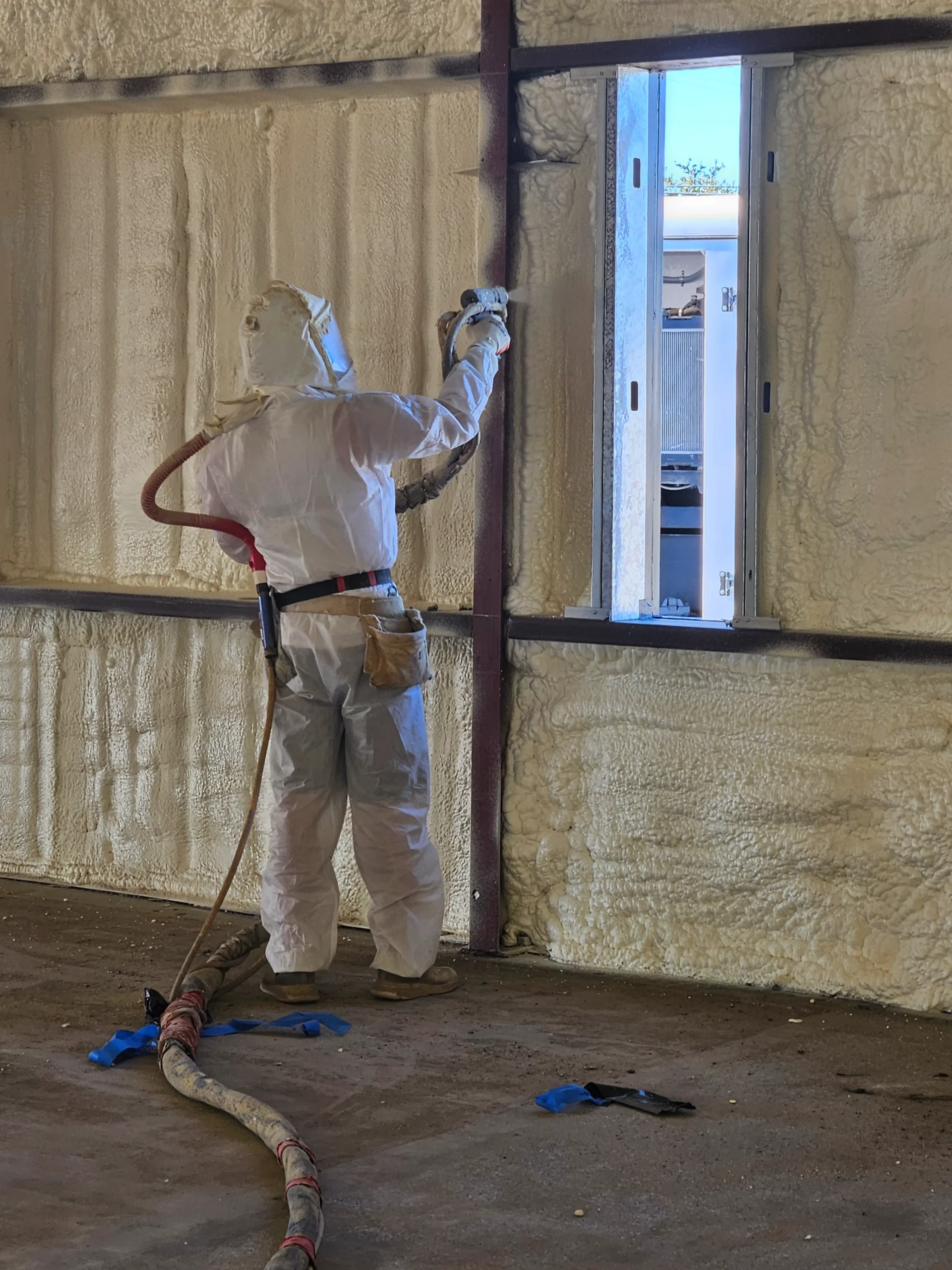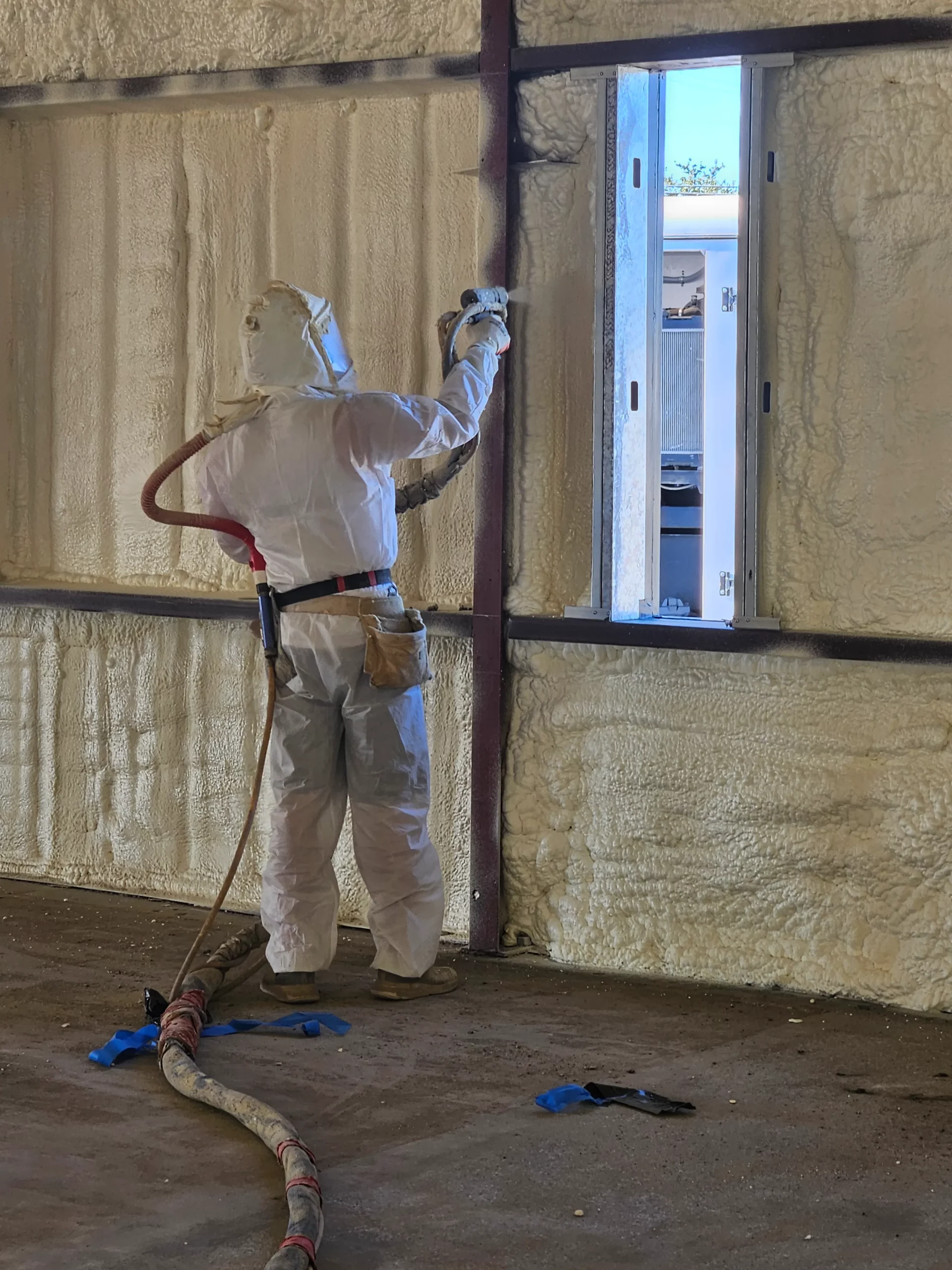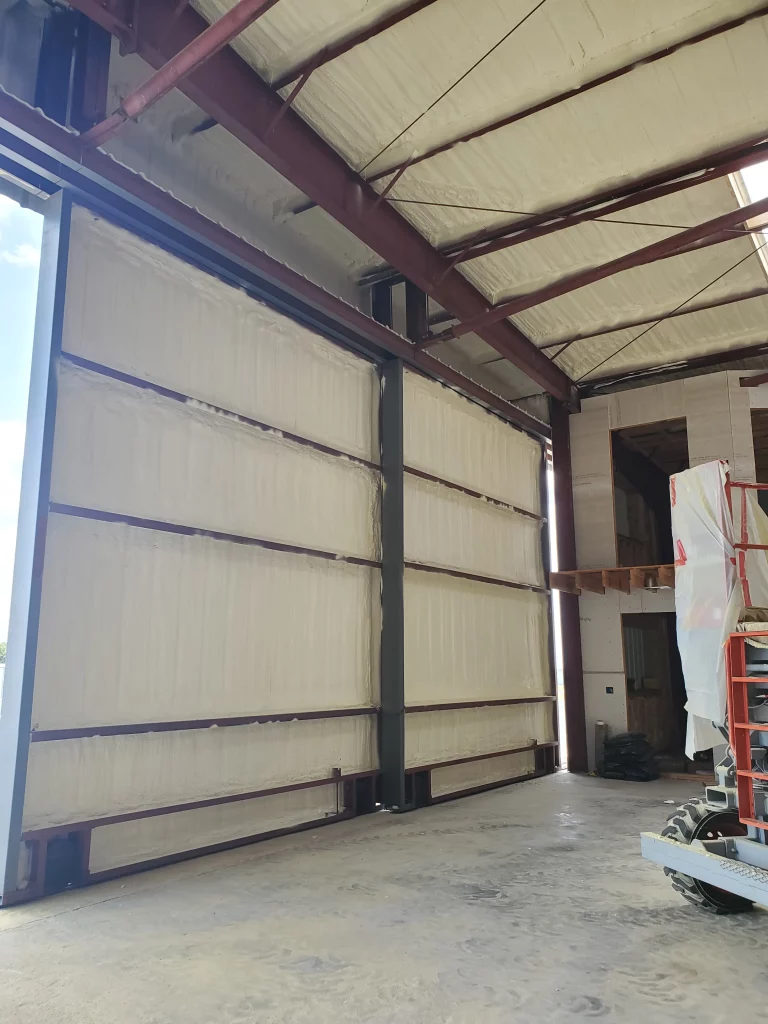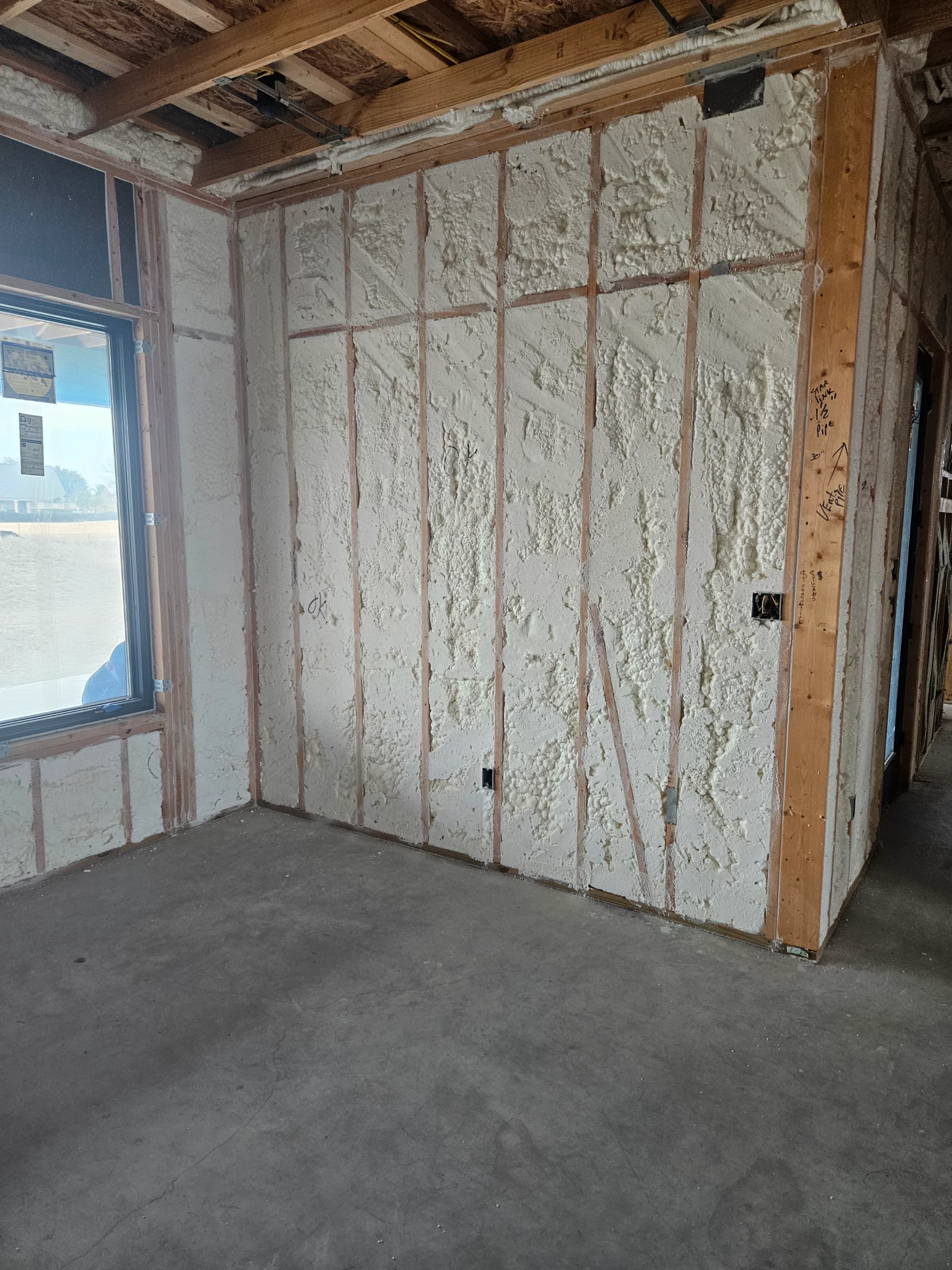

Spray foam insulation delivers substantial long-term savings through energy cost reductions of 30-50% annually, maintenance savings exceeding $2,000 over a 20-year period, and property value increases of 3-5%. The investment typically pays for itself within 3-7 years through reduced heating and cooling costs, while providing decades of consistent performance without degradation or replacement needs.
These savings stem from spray foam’s superior air sealing properties, higher R-values per inch, and exceptional durability compared to traditional insulation materials. Unlike fiberglass or cellulose that can settle, absorb moisture, or lose effectiveness over time, properly installed spray foam maintains its insulating properties for the building’s lifetime. Based on extensive field experience with residential and commercial installations across various climate zones, the financial benefits compound significantly over time, making spray foam one of the most cost-effective building improvements available.
The primary source of spray foam insulation savings comes from dramatic energy cost reductions. According to the Department of Energy, buildings with spray foam insulation consume 30-50% less energy for heating and cooling compared to those with traditional insulation methods. This translates to immediate monthly utility bill reductions that continue for decades.
In practical applications, a typical 2,000 square foot home spending $200 monthly on energy costs can expect savings of $60-100 per month after spray foam installation. Over a 20-year period, this represents $14,400-24,000 in energy savings alone. The exact savings depend on climate zone, existing insulation conditions, and building envelope efficiency.
Climate-specific performance data shows even greater savings in extreme temperature regions. Homes in Texas heat zones see cooling cost reductions of 40-55% during peak summer months, while properties in northern climates achieve heating savings of 35-45% during winter periods. These regional variations stem from spray foam’s ability to eliminate thermal bridging and air infiltration that traditional insulation cannot address.
Bonus Tip: Installing spray foam during new construction or major renovations maximizes savings potential by allowing complete envelope sealing, including areas typically inaccessible in retrofit applications.
Traditional insulation materials require periodic replacement, inspection, and maintenance that adds significant long-term costs. Fiberglass batts settle and compress over time, losing up to 30% of their R-value within 10-15 years. Cellulose insulation absorbs moisture, creating mold risks and requiring removal in many cases.
Spray foam insulation eliminates these maintenance costs entirely. Closed-cell spray foam maintains its R-value and structural integrity for 50+ years without degradation. Open-cell formulations provide 20-30 years of consistent performance with minimal maintenance requirements. This durability translates to substantial savings over time.
Additional maintenance savings come from spray foam’s pest resistance and moisture control properties. Traditional insulation provides nesting material for rodents and insects, requiring pest control services and insulation replacement. Spray foam creates an inhospitable environment for pests while preventing moisture infiltration that leads to mold, rot, and structural damage.
Spray foam insulation increases property values through improved energy efficiency ratings and enhanced structural integrity. Real estate studies indicate that homes with spray foam insulation sell for 3-5% more than comparable properties with traditional insulation, according to the National Association of Realtors’ 2024 sustainability report.
Energy-efficient homes receive higher appraisal values due to documented utility cost savings and improved comfort ratings. Properties with spray foam insulation often achieve Energy Star certification or qualify for green building programs, further enhancing market value and buyer appeal.
Beyond immediate resale value, spray foam insulation provides marketability advantages through:
Bonus Tip: Document energy usage before and after spray foam installation to provide concrete evidence of savings for future property sales or refinancing applications.
Understanding how spray foam performs against alternative insulation methods helps quantify long-term savings potential. Each insulation type offers different cost structures, performance characteristics, and maintenance requirements.
| Insulation Type | R-Value per Inch | Air Sealing | Moisture Resistance | Lifespan |
|---|---|---|---|---|
| Closed-Cell Spray Foam | R-6 to R-7 | Excellent | Excellent | 50+ years |
| Open-Cell Spray Foam | R-3.5 to R-4 | Excellent | Good | 20-30 years |
| Fiberglass Batts | R-3 to R-4 | Poor | Poor | 15-20 years |
| Cellulose | R-3.5 | Fair | Poor | 10-15 years |
| Rigid Foam Boards | R-5 to R-6 | Fair | Good | 25-30 years |
The superior performance characteristics of spray foam insulation justify higher initial costs through extended lifespan, better energy efficiency, and reduced maintenance requirements. Total cost of ownership calculations consistently favor spray foam over 20+ year periods.
Spray foam insulation’s technical specifications directly impact long-term savings through superior thermal performance and air barrier properties. Understanding these characteristics helps predict actual savings in specific applications.
| Performance Metric | Closed-Cell Foam | Open-Cell Foam | Fiberglass | Cellulose |
|---|---|---|---|---|
| Thermal Resistance (R-value/inch) | R-6.0-7.0 | R-3.5-4.0 | R-3.0-4.0 | R-3.5 |
| Air Permeability (cfm/sq ft @ 75 Pa) | <0.02 | 2.0-5.5 | >5.0 | >5.0 |
| Vapor Permeability (perms) | <1.0 | 16.0+ | Variable | Variable |
| Compressive Strength (psi) | 25-40 | 0.5-1.0 | <1.0 | <1.0 |
| Moisture Absorption (%) | <2.0 | <5.0 | Variable | High |
| Settlement Over Time (%) | 0 | 0 | 20-30% | 15-25% |

These technical advantages translate directly to energy savings and reduced maintenance costs. The combination of high R-value, complete air sealing, and dimensional stability ensures consistent performance throughout the insulation’s lifespan.
Several factors influence the actual savings potential of spray foam insulation and should guide decision-making. Climate zone significantly impacts performance, with extreme temperature regions seeing greater savings potential. Building age and existing insulation condition affect installation complexity and cost-effectiveness.
Budget considerations extend beyond initial installation costs to include long-term savings projections and available financing options. Many utility companies offer rebates for spray foam installation, reducing upfront investment while maintaining full savings benefits. Federal and state tax credits may apply for energy efficiency improvements.
Installation timing affects both cost and performance outcomes. New construction applications provide optimal savings potential through complete envelope treatment. Retrofit installations require careful assessment of existing conditions and access limitations that may impact coverage completeness.
Professional installation quality directly determines savings realization. Proper application techniques, appropriate foam selection, and complete coverage ensure maximum energy efficiency and longevity. Inadequate installation can reduce savings potential by 20-40% compared to properly executed applications.
Bonus Tip: Schedule installation during moderate weather conditions when foam chemistry performs optimally, ensuring proper expansion and curing for maximum long-term performance.
Spray Foam Tech specializes in delivering superior insulation solutions that maximize long-term energy savings and property value enhancement. Our comprehensive service offerings ensure optimal performance for residential and commercial applications.
Each installation follows industry best practices to ensure maximum savings realization and long-term performance consistency across all climate conditions.
The long-term savings potential of spray foam insulation extends far beyond immediate energy cost reductions to encompass maintenance savings, property value enhancement, and improved building performance. The combination of superior thermal properties, complete air sealing, and exceptional durability creates a compelling financial case for spray foam installation.
Successful savings realization requires careful consideration of climate factors, building conditions, and installation quality. Professional assessment and proper application techniques ensure maximum return on investment through decades of consistent performance. The initial investment premium compared to traditional insulation materials pays dividends through reduced energy costs, eliminated maintenance expenses, and enhanced property values.
Transform your property’s energy efficiency and unlock substantial long-term savings with professional spray foam insulation solutions. Our experienced team provides comprehensive assessments, quality installations, and performance guarantees to maximize your insulation investment returns.
Contact Spray Foam Tech today to discuss your specific insulation needs and savings potential. Our experts will evaluate your property conditions, explain available options, and provide detailed savings projections based on your unique situation.
Phone: (737) 777-9590
Email: oldworldtx@hotmail.com
Schedule your consultation to discover how spray foam insulation can reduce your energy costs, enhance property value, and provide decades of reliable performance.
Most spray foam installations achieve payback within 3-7 years through energy cost savings, depending on climate zone, energy costs, and existing insulation conditions. Homes in extreme temperature climates typically see faster payback periods.
Yes, properly installed spray foam maintains its insulating properties and air sealing capabilities for 50+ years without degradation, providing consistent energy savings throughout the building’s lifespan.
Inadequate installation coverage, improper foam selection for climate conditions, and poor building envelope design can reduce savings potential. Professional assessment and installation ensure optimal results.
Extreme temperature climates see greater savings potential, with cooling savings of 40-55% in hot climates and heating savings of 35-45% in cold regions. Moderate climates typically achieve 25-35% energy cost reductions.
Most insurance companies recognize spray foam’s fire safety ratings and structural benefits, with many offering discounts for improved energy efficiency and reduced moisture-related damage risks.
Closed-cell spray foam lasts 50+ years without replacement, while open-cell formulations provide 20-30 years of consistent performance. Traditional fiberglass requires replacement every 15-20 years, and cellulose needs replacement every 10-15 years due to settling and moisture absorption.
Closed-cell spray foam excels in humid conditions by providing complete moisture barriers that prevent condensation and mold growth. This performance advantage is particularly valuable in coastal and subtropical regions where moisture control directly impacts energy costs and building durability.
Existing insulation should typically be removed to ensure proper adhesion and complete air sealing. Leaving old insulation can create moisture traps and reduce spray foam’s effectiveness, diminishing long-term savings potential.
Spray foam requires minimal maintenance beyond periodic visual inspections for damage or gaps. Unlike traditional insulation that settles and loses effectiveness, spray foam maintains its properties without intervention, eliminating ongoing maintenance costs.
Many utility companies offer rebates of $0.50-2.00 per square foot for spray foam installation, while federal tax credits may apply for energy efficiency improvements. These incentives reduce initial costs while maintaining full long-term savings benefits, improving overall return on investment.


